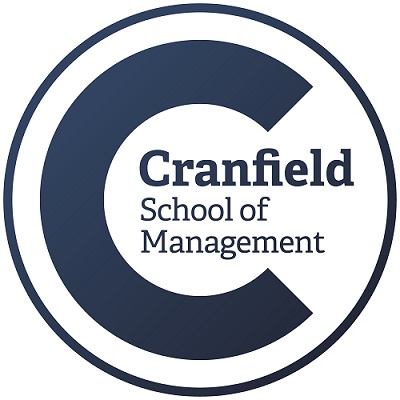- Learning
Apprenticeship Levy for Leaders
Now in its fourth year the Senior Leader Apprenticeship, a leadership pathway co-created by large UK employers including Aon and Cranfield School of Management and powered by the Apprenticeship Levy is beginning to form a dynamic new playbook for others to follow
Seven years on, have organizations got to grips with the complexity of this area of the scheme? Are they deriving real benefits and tangible outcomes? And if so, what guiding lessons and best practices can we glean from those organizations?
In a recent live online panel event hosted by IEDP, two deeply involved practitioners—Julie Hyett, Talent Development Manager at Aon, and Alasdair Poole, Apprenticeship Principal at Cranfield School of Management—provided their insight into how the levy is being used to great effect and success in delivering high quality executive development through the Level 7 Senior Leader Apprenticeship, and how their partnership can provide a valuable playbook for others.
……………………………………………………………………………………………………………........................
Primer: What exactly is the Apprenticeship Levy?
The Apprenticeship Levy is a tax on employers with a pay bill of over £3m, set at a rate of 0.5% of their total pay bill, which can be used to fund employee training. The taxed amount is held in a 'digital fund' that employers can use to pay for training, with the Government adding a 10% contribution to any payments made. Payment from the digital fund is made directly to training providers on a monthly basis, for as long as an apprentice remains on the scheme. Budget in the digital fund expires after 24 months, although since 2019 companies have been able to share up to 25% of their levy fund with other businesses in their supply chain.
…………………………………………………………………………………………………………...........................
New understandings needed
Julie Hyett opened the discussion by explaining it had taken four years to arrive at a point where Aon were using 100% of their levy fund. Aon were early adopters of the scheme, which, Hyett says, “led us to come out very early with a bold statement that we wanted to get all of our money back,”—a proposal made to the CEO—"that everybody in my team has cursed me for saying, because we have been chasing it for years.”
Four years on and this ambitious aim has in fact been achieved. “We now have apprenticeship pathways across all of our technical and leadership capabilities,” Hyett reports. “10% of our permanent population are currently apprentices,” she adds, “That's my story today, and there is a great deal more to come.”
There have been barriers and challenges, both external and internal, for Aon and Hyett to overcome, in getting to this position. Externally there is a challenge in understanding how the Levy works, and in interpreting and embedding the compliance rules surrounding it. As Hyett describes, “You need to first understand this is not something off-the-shelf, but rather something that has to be built. There is a huge opportunity to work with providers and to customize. I think that has been one of the keys to our success.”
With the opportunity identified, organizational and learners needs analysis is required to take hold of it and actualize it—from understanding where the standards are, who provides them, and the best way to access them—to then understanding what you can spend your levy fund on, and who, and how to access the training and contracts with providers. “The whole process is actually quite complicated,” admits Hyett.
One oft-expressed concern is that the Apprenticeship Levy requires each signed up apprentice to spend 20% of their time on learning—theoretically ‘losing’ one working day a week. In Hyett’s experience this is not a problem, particularly in a firm like Aon that allows flexible working practices, because committed executives organize tasks and roles, “into the confines of what they consider their normal working week.”
What’s in a name?
Internally, the most obvious challenge to overcome was the word ‘apprentice’ itself, in the context of executive development. In short: how is an executive going to feel about being an apprentice at the age of 45?
Hyett’s solution was to “crash through” this objection by rebranding the initiative as an Aon one. As she explains, “developing our own programs in a way where people are not thinking ‘I'm going to be an apprentice’, but rather they are thinking, ‘I'm taking advantage of this Aon program and I'm getting many thousands of pounds worth of investment in my development’.”
The key to achieving this is to work with savvy training providers, able to consult and customize and contextualise to the culture of the firm and the individual employee’s needs, while being transparent about the levy’s requirements in terms of standards.
For Alasdair Poole, working with clients like Aon to develop leadership level programs that meet levy requirements, engaging with clients is the key— “to find out what the market wants, relate that back into design, and then push ahead with co-creating programs.”
Degree level apprenticeships were initially conceived as academic style programs. Now there is a transition to a more practical and commercial ‘exec ed’ style. “It is really a seismic journey that large UK employers’ leadership apprenticeships have been on,” recalls Poole, “for providers to rewire themselves to serve a more flexed, pacey style of program, with a strong commercial acumen component—it’s a huge shift.”
Changing the status quo
There will always be those with high potential for senior corporate leadership who will want to take a traditional MBA and similar academically accredited qualifications. However, this has only ever been a relatively small percentage of the overall executive population. As Poole suggests, “The majority of the executive population is on the non-academic side—starved of, and in need of leadership development.” Co-creating programs with clients, to have a commercial acumen focus and meet that need has been a major change for university-based providers such as Cranfield School of Management.
Large organizations will previously have sponsored a few employees who embark on master’s qualifications—and they still will—but this was always done on an ad hoc basis, with individuals expected to study at weekends and in the evenings. From Aon’s perspective, says Hyett, “This new approach is more strategic. It is a more purposeful engagement with our high potentials and our leaders—with an expectation that their skills will elevate throughout their careers. Now we are giving them those tools in a way that gives them a security and a grounding within our organization—but also the prestige of joining a significant, highly-regarded development program outside of the business,”—in Aon’s case with Cranfield.
On the provider side, the development of the senior leader apprenticeship has gone through two phases, as Poole explains, “The first phase was characterized by a mandatory master's level qualification—hugely beneficial to some, but not for all. In the second phase the mandatory master’s feature has been dropped, allowing for a significant change towards a more commercial acumen-style ‘exec ed’ feel.”
What does this ‘exec ed’ feel amount to in terms of real change? Poole explains that programs can now be much more commercially tailored and delivered. “Dropping some of the academic accreditation has a big impact on how the experience is assessed,” he notes.
Programs can become shorter and slicker with “the duration decreased from up to two and a half years, to one to two years.”
There is real innovation here, as Poole further notes, in “creating a senior leader apprenticeship which is much more commercial in terms of deliverables, is much more pacey, and one that ensures employers are more involved.” This is also important to the regulatory body, the Institute for Apprenticeships, which wants employers to be drive at least the first phase of end-point-assessment. “Whereas on master’s programs the learner is a bit of a lone wolf, the Institute really wants learners to be delivering those organizational objectives that the organization has played a part in defining.”
According to Poole, “Organizations like Aon have been exemplary,” both in this co-creating aspect and in ‘crashing through’ the stigma of ‘apprentice’ to executives—transparently promoting levy funded training opportunities to their existing leader populations. As Poole notes these are “much larger than the high potential ones, and so bring the greater volume of participants we see at level three and level five, to now take the senior leader apprenticeship.”
Developing your leadership pathway
The Aon leadership pathway takes a future leader from managing their first team, right through enterprise level, strategic thinking. The pathway moves through the levy’s different levels, from, “level three, level five, and level seven leadership standards,” explains Hyett. “This takes somebody from just starting to manage the work of others, through early leadership, to focus more strongly on the human elements in the team, right up to strategic leadership.” Cranfield comes in at level seven, the strategic leadership level.
By driving awareness of the levy scheme across the organization it is possible to get people engaged who otherwise may not have looked for further development. “It has become an expectation now at Aon,” notes Hyett. “Internally we have branded them as ‘Go Further’ programs and people are asking to be included.”
How is success defined and measured in a scheme such as this? “We look at things like levy spend and how that is increasing. We look at whether more people are taking up the opportunities being made available, and the feedback being given from the programs.” These metrics are extremely positive, Hyett reports, “It’s phenomenal. Absolutely phenomenal. We're in no doubt that this is the right thing to be doing.”
Forward progress
Currently the focus of the Exec Ed leadership apprenticeship program at Cranfield is on ‘closed cohorts’—groups of 25 to 30 people from single organizations such as Aon or small groups making up a consortium. “This is where we are seeing a strong demand,” reports Poole. “We have also had lots of expressions of interest in consortium programs—participants coming from different partners of the same value chain, or from industry sector consortia around a particular industry vertical. Over time we will start to deliver the program to individuals and small groups, making up open cohorts.”
The outcome and ultimate measure of all of this will be exemplified by the individual executive, their experience, and how a levy funded training initiative has helped in their development as a leader. Here Hyett comments on her own experience as a learner, where she finds the results most evident back working in her role, “You’ve had the support of a string of executive development associates and professors from Cranfield, who’ve delivered the most up to date information from the market, from learning practice, which you can apply practically for your organization. Everything you've been learning is impacting what the organization is doing day-to-day. I can speak from a personal perspective as a learner—being able to do that has been invaluable. It's making me better at my job, and that is the hope we have for everybody who is going to be taking part at Aon.”
The development of Senior Leader Apprenticeship strategy for large UK organizations is continuous—its application still being understood by employers, the training provision it funds is more dynamic and flexed and its outcomes yet to be fully measured. However, the evidence is, as exemplified by the experiences of Aon and Cranfield School of Management—and the playbook they are creating together—that it has taken root and is beginning to offer very significant inroads into at-scale leadership development programs tackling the UK’s need for honed, intuitive and future-focused business and executive level leaders.
Find out more about the UK levy apprenticeship scheme and what it can do for you.
Or talk to Cranfield School of Management’s team of specialists on +44 (0)1234 754500.
ARTICLES YOU MIGHT LIKE
VIEWPOINT
For Thomas Misslin, transformation rather than training is the aim of executive education at emlyon business school
DEVELOPING LEADERS QUARTERLY MAGAZINE AND WEEKLY BRIEFING EMAILS


































